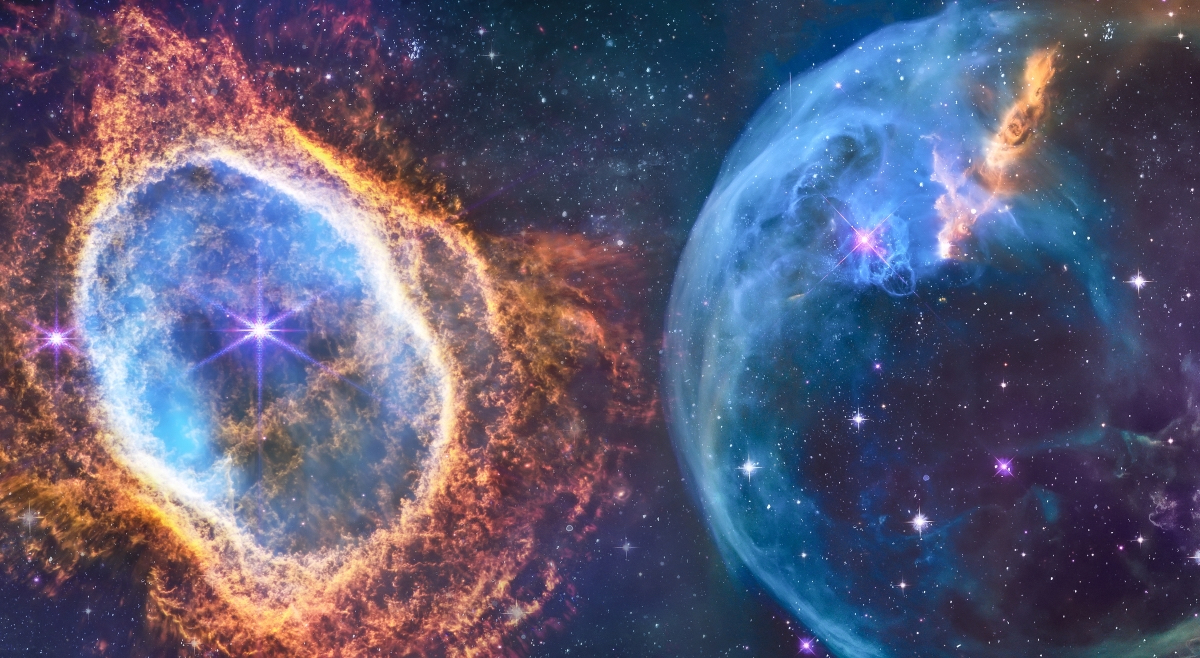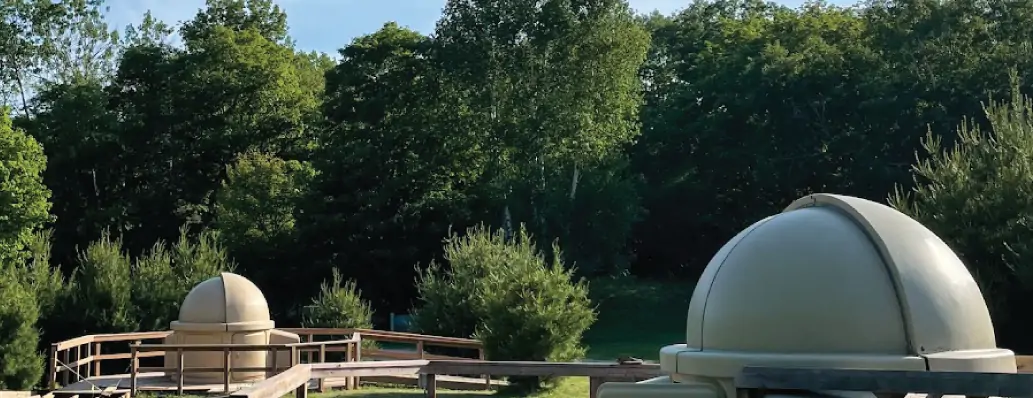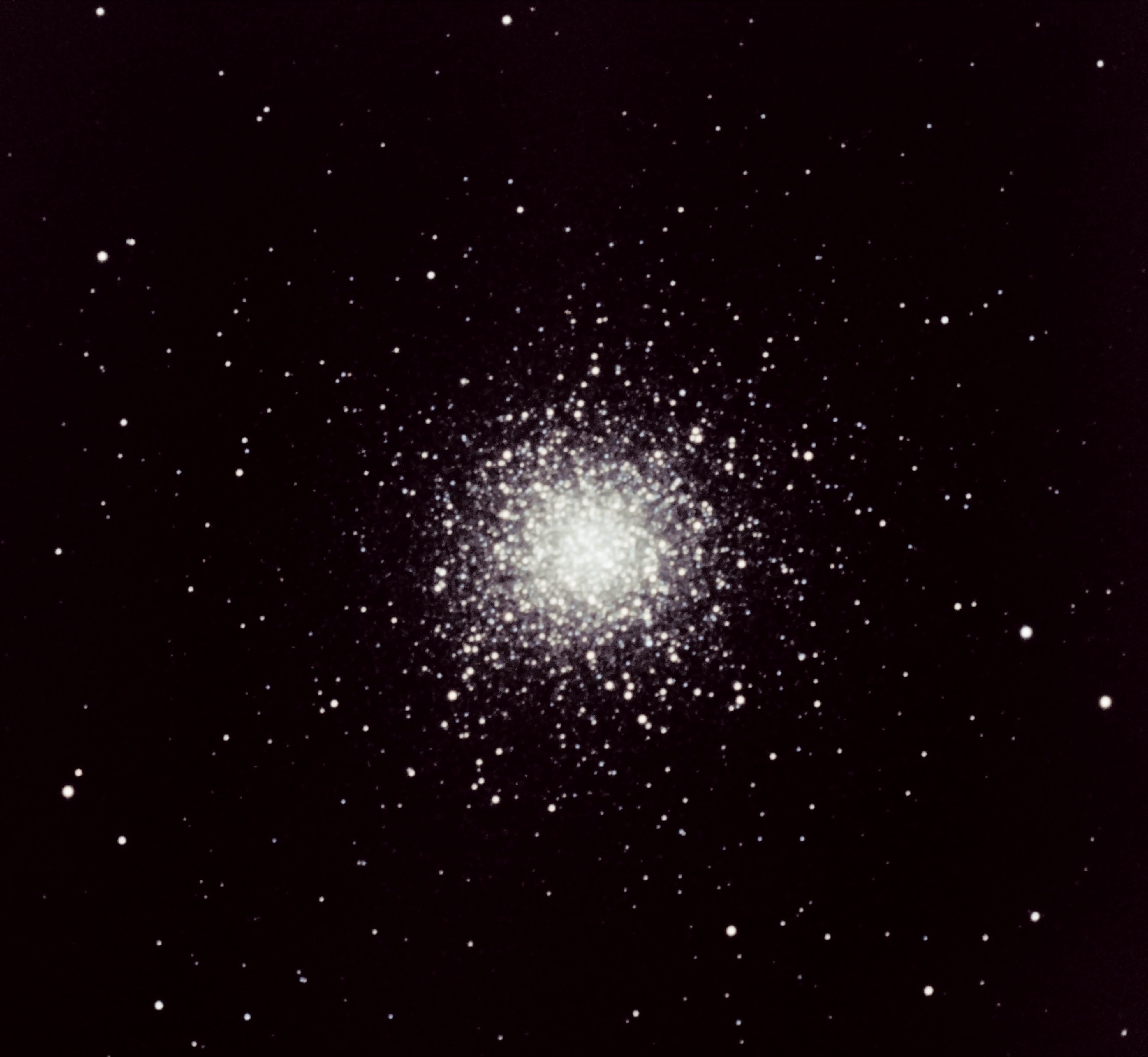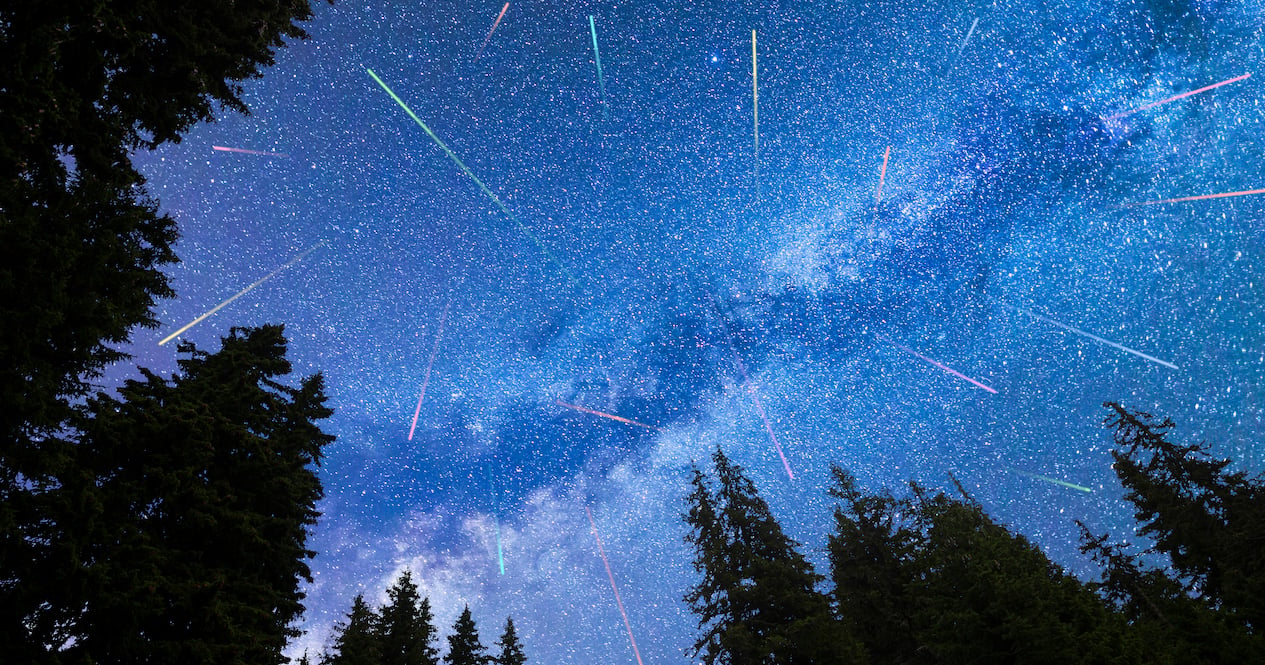Science
$26 million to propel space research at McGill and Université de Montréal to the outer limits

The McGill Space Institute (MSI) and the Institute for Research on Exoplanets (iREx) at Université de Montréal are at the forefront of the exhilarating pace of space research, helping to advance our knowledge of extrasolar planets, fast radio bursts, the dark universe, and other extraterrestrial mysteries. Now their stellar work and efforts to recruit top students and researchers are getting a huge boost thanks to extraordinary gifts to McGill University and the Université de Montréal from the Trottier Family Foundation.
The visionary gifts, which total $26 million, coincide with an exciting age of discovery in astrophysics, thanks in part to the development of powerful new telescopes – such as the Canadian Hydrogen Intensity Mapping Experiment (CHIME) and James Webb Space Telescope (JWST) – that enable researchers to explore deep into our solar system and beyond. In addition to advancing our understanding of the universe, space research has contributed to the development of transformative technologies that have greatly benefitted society, including communication satellites, GPS, high-performance cameras, and high-speed wireless internet.
Trottier Space Institute at McGill University
The McGill Space Institute will receive $16 million, of which half will go towards the construction of an annex to the Institute’s current building on University Street. The other portion of the gift will be used to fund graduate and postdoctoral fellowships, as well as to expand on existing programmatic and research support. The ground-breaking work by the Space Institute’s researchers includes major discoveries in the area of neutron stars and fast radio bursts by Professor of Physics and Director of the Institute Victoria Kaspi, an award-winning astrophysicist who holds the Lorne Trottier Chair in Astrophysics and Cosmology at McGill.
In recognition of this historic gift, the McGill Space Institute will be renamed the Trottier Space Institute at McGill.
Trottier Institute for Research on Exoplanets at Université de Montréal
For its part, Université de Montréal’s Institute for Research on Exoplanets will receive $10 million to ensure the sustainability of its activities. Leaders in exoplanet research, iREx scientists have made discoveries that profoundly changed what we know about worlds beyond our solar system. Led by astrophysicist René Doyon, a Professor of Physics and the Canadian Principal Investigator of the James Webb mission, iREx has developed major scientific instruments, including an infrared camera that has captured remarkable and previously unseen images of space. In addition, iREx devotes great effort to sharing knowledge with the general public. The Trottier Family Foundation’s major gift will allow iREx’s scientific team to continue its research to discover life outside the solar system. In recognition of this exceptional donation and the support of Lorne Trottier and the Trottier Family Foundation since its inception, iREx will be renamed the Trottier Institute for Research on Exoplanets.
Leading hub of space research
“These devoted researchers scanning our skies have already broadened our horizons in a big way,” said UdeM rector Daniel Jutras. “Probing the mysteries of the universe, they have helped us come to recognize the beauty and fragility of our planet. The unprecedented support for Montreal scientists offered by Mr. Trottier and the Trottier Family Foundation will also help preserve our ecosystems here on Earth. It’s a gift that will continue to enrich future generations.”
“We are very grateful to McGill alumnus Lorne Trottier and the Trottier Family Foundation, whose tremendous contributions to McGill and to its Faculties of Science and Engineering over many years have helped further our understanding of our world and our universe,” said McGill’s Interim Principal and Vice-Chancellor, Christopher Manfredi. “This most recent gift, spread out among two of our city’s great universities, will cement Montreal’s place as a leading hub of space research within Canada and the world.”
“The Trottier Family Foundation is pleased to support the world-class work of the Trottier Space Institute at McGill and the Trottier Institute for Research on Exoplanets at the Université de Montréal,” said Lorne Trottier, the co-founder of Matrox, an industry leader in computer graphics, imaging and video products. “Science has brought untold benefits to humanity,” added Trottier, who noted astronomy was the first science. “Copernicus, Galileo and Newton laid the groundwork for the scientific revolution that’s transformed lives in so many ways. Understanding more about the laws of the universe and its origins leads to discoveries and innovations that are beneficial – in addition to satisfying our deep curiosity.”
Love of science and technology
With a lifelong love of science and technology, Lorne Trottier earned bachelor and master’s degrees in Engineering at McGill and has received several honorary degrees, including from McGill and the Université de Montréal. His family foundation has supported exoplanet research at iREx at the Université de Montréal and provided support to many key institutions on the island of Montreal. The foundation has supported astronomy education for youth across Canada and funds various initiatives promoting Science, Technology, Engineering and Mathematics (STEM) throughout Canada.
The Trottier Family Foundation’s generosity has made an indelible mark on McGill, including the Lorne M. Trottier Building on campus that bears his name, the creation of institutes in the Faculties of Science and Engineering and support for popular public education initiatives.
The Trottier Space Institute has flourished since its creation in 2015 with support from the Trottier Family Foundation. The interdisciplinary centre brings together researchers in Astrophysics, Planetary Science, Atmospheric Sciences, Astrobiology and other space-related areas at McGill. McGill researchers have detected thousands of fast radio bursts and identified magnetars as one likely origin of this mysterious phenomenon, helped make the first image of a black hole using the Event Horizon Telescope, and developed a microbial life detection system for space missions.
Since its inception in 2014, UdeM’s Trottier Institute for Research on Exoplanets successfully recruited more than 60 of the world’s most renowned researchers in a variety of domains of expertise related to the search for and understanding of alien worlds beyond our solar system. Over the years, the members of iREx have made major advances in astrophysical research, including, in 2019, the first detection of water on a planet, K2-18 b, in the habitable zone of the star it orbits, and in 2022, the discovery of a candidate “ocean planet,” TOI-1452 b, that made headlines around the world. Researchers from iREx are also leaders in the conception and development of cutting-edge astronomical instruments that have been sent to world-class telescopes all over the globe and in space.
Science
Asteroid Apophis will visit Earth in 2029, and this European satellite will be along for the ride

The European Space Agency is fast-tracking a new mission called Ramses, which will fly to near-Earth asteroid 99942 Apophis and join the space rock in 2029 when it comes very close to our planet — closer even than the region where geosynchronous satellites sit.
Ramses is short for Rapid Apophis Mission for Space Safety and, as its name suggests, is the next phase in humanity’s efforts to learn more about near-Earth asteroids (NEOs) and how we might deflect them should one ever be discovered on a collision course with planet Earth.
In order to launch in time to rendezvous with Apophis in February 2029, scientists at the European Space Agency have been given permission to start planning Ramses even before the multinational space agency officially adopts the mission. The sanctioning and appropriation of funding for the Ramses mission will hopefully take place at ESA’s Ministerial Council meeting (involving representatives from each of ESA’s member states) in November of 2025. To arrive at Apophis in February 2029, launch would have to take place in April 2028, the agency says.
This is a big deal because large asteroids don’t come this close to Earth very often. It is thus scientifically precious that, on April 13, 2029, Apophis will pass within 19,794 miles (31,860 kilometers) of Earth. For comparison, geosynchronous orbit is 22,236 miles (35,786 km) above Earth’s surface. Such close fly-bys by asteroids hundreds of meters across (Apophis is about 1,230 feet, or 375 meters, across) only occur on average once every 5,000 to 10,000 years. Miss this one, and we’ve got a long time to wait for the next.
When Apophis was discovered in 2004, it was for a short time the most dangerous asteroid known, being classified as having the potential to impact with Earth possibly in 2029, 2036, or 2068. Should an asteroid of its size strike Earth, it could gouge out a crater several kilometers across and devastate a country with shock waves, flash heating and earth tremors. If it crashed down in the ocean, it could send a towering tsunami to devastate coastlines in multiple countries.
Over time, as our knowledge of Apophis’ orbit became more refined, however, the risk of impact greatly went down. Radar observations of the asteroid in March of 2021 reduced the uncertainty in Apophis’ orbit from hundreds of kilometers to just a few kilometers, finally removing any lingering worries about an impact — at least for the next 100 years. (Beyond 100 years, asteroid orbits can become too unpredictable to plot with any accuracy, but there’s currently no suggestion that an impact will occur after 100 years.) So, Earth is expected to be perfectly safe in 2029 when Apophis comes through. Still, scientists want to see how Apophis responds by coming so close to Earth and entering our planet’s gravitational field.
“There is still so much we have yet to learn about asteroids but, until now, we have had to travel deep into the solar system to study them and perform experiments ourselves to interact with their surface,” said Patrick Michel, who is the Director of Research at CNRS at Observatoire de la Côte d’Azur in Nice, France, in a statement. “Nature is bringing one to us and conducting the experiment itself. All we need to do is watch as Apophis is stretched and squeezed by strong tidal forces that may trigger landslides and other disturbances and reveal new material from beneath the surface.”
By arriving at Apophis before the asteroid’s close encounter with Earth, and sticking with it throughout the flyby and beyond, Ramses will be in prime position to conduct before-and-after surveys to see how Apophis reacts to Earth. By looking for disturbances Earth’s gravitational tidal forces trigger on the asteroid’s surface, Ramses will be able to learn about Apophis’ internal structure, density, porosity and composition, all of which are characteristics that we would need to first understand before considering how best to deflect a similar asteroid were one ever found to be on a collision course with our world.
Besides assisting in protecting Earth, learning about Apophis will give scientists further insights into how similar asteroids formed in the early solar system, and, in the process, how planets (including Earth) formed out of the same material.
One way we already know Earth will affect Apophis is by changing its orbit. Currently, Apophis is categorized as an Aten-type asteroid, which is what we call the class of near-Earth objects that have a shorter orbit around the sun than Earth does. Apophis currently gets as far as 0.92 astronomical units (137.6 million km, or 85.5 million miles) from the sun. However, our planet will give Apophis a gravitational nudge that will enlarge its orbit to 1.1 astronomical units (164.6 million km, or 102 million miles), such that its orbital period becomes longer than Earth’s.
It will then be classed as an Apollo-type asteroid.
Ramses won’t be alone in tracking Apophis. NASA has repurposed their OSIRIS-REx mission, which returned a sample from another near-Earth asteroid, 101955 Bennu, in 2023. However, the spacecraft, renamed OSIRIS-APEX (Apophis Explorer), won’t arrive at the asteroid until April 23, 2029, ten days after the close encounter with Earth. OSIRIS-APEX will initially perform a flyby of Apophis at a distance of about 2,500 miles (4,000 km) from the object, then return in June that year to settle into orbit around Apophis for an 18-month mission.
Related Stories:
Furthermore, the European Space Agency still plans on launching its Hera spacecraft in October 2024 to follow-up on the DART mission to the double asteroid Didymos and Dimorphos. DART impacted the latter in a test of kinetic impactor capabilities for potentially changing a hazardous asteroid’s orbit around our planet. Hera will survey the binary asteroid system and observe the crater made by DART’s sacrifice to gain a better understanding of Dimorphos’ structure and composition post-impact, so that we can place the results in context.
The more near-Earth asteroids like Dimorphos and Apophis that we study, the greater that context becomes. Perhaps, one day, the understanding that we have gained from these missions will indeed save our planet.

Science
McMaster Astronomy grad student takes a star turn in Killarney Provincial Park

Astronomy PhD candidate Veronika Dornan served as the astronomer in residence at Killarney Provincial Park. She’ll be back again in October when the nights are longer (and bug free). Dornan has delivered dozens of talks and shows at the W.J. McCallion Planetarium and in the community. (Photos by Veronika Dornan)
BY Jay Robb, Faculty of Science
July 16, 2024
Veronika Dornan followed up the April 8 total solar eclipse with another awe-inspiring celestial moment.
This time, the astronomy PhD candidate wasn’t cheering alongside thousands of people at McMaster — she was alone with a telescope in the heart of Killarney Provincial Park just before midnight.
Dornan had the park’s telescope pointed at one of the hundreds of globular star clusters that make up the Milky Way. She was seeing light from thousands of stars that had travelled more than 10,000 years to reach the Earth.
This time there was no cheering: All she could say was a quiet “wow”.
Dornan drove five hours north to spend a week at Killarney Park as the astronomer in residence. part of an outreach program run by the park in collaboration with the Allan I. Carswell Observatory at York University.
Dornan applied because the program combines her two favourite things — astronomy and the great outdoors. While she’s a lifelong camper, hiker and canoeist, it was her first trip to Killarney.
Bruce Waters, who’s taught astronomy to the public since 1981 and co-founded Stars over Killarney, warned Dornan that once she went to the park, she wouldn’t want to go anywhere else.
The park lived up to the hype. Everywhere she looked was like a painting, something “a certain Group of Seven had already thought many times over.”
She spent her days hiking the Granite Ridge, Crack and Chikanishing trails and kayaking on George Lake. At night, she went stargazing with campers — or at least tried to. The weather didn’t cooperate most evenings — instead of looking through the park’s two domed telescopes, Dornan improvised and gave talks in the amphitheatre beneath cloudy skies.
Dornan has delivered dozens of talks over the years in McMaster’s W.J. McCallion Planetarium and out in the community, but “it’s a bit more complicated when you’re talking about the stars while at the same time fighting for your life against swarms of bugs.”
When the campers called it a night and the clouds parted, Dornan spent hours observing the stars. “I seriously messed up my sleep schedule.”
She also gave astrophotography a try during her residency, capturing images of the Ring Nebula and the Great Hercules Cluster.

“People assume astronomers take their own photos. I needed quite a lot of guidance for how to take the images. It took a while to fiddle with the image properties, but I got my images.”
Dornan’s been invited back for another week-long residency in bug-free October, when longer nights offer more opportunities to explore and photograph the final frontier.
She’s aiming to defend her PhD thesis early next summer, then build a career that continues to combine research and outreach.
“Research leads to new discoveries which gives you exciting things to talk about. And if you’re not connecting with the public then what’s the point of doing research?”

Science
Where in Vancouver to see the ‘best meteor shower of the year’

Eyes to the skies, Vancouver, because between now and September 1st, stargazers can witness the ‘best meteor shower of the year’ according to NASA.
Known for its “long wakes of light and colour,” the Perseid Meteor Shower will peak on August 12th, 2024 – so consider this list a great place to start if you’re in search of a prime stargazing spots!
Grab your lawn chairs and blankets, and seek as little light pollution as possible. Here are some ideal stargazing spots to check out in and around Vancouver this summer.
Recent Posts:
This island with clear waters has one of the prettiest towns in BC
10 beautiful lake towns to visit in BC this summer
Wreck Beach
If you’re willing to brave the stairs and the regulars, it doesn’t get much better than Wreck Beach for watching the skies – for both sunsets and stargazing. The west-facing views practically eliminate immediate distractions from the city lights.
Spanish Banks Park
Spanish Banks is the perfect mixture of convenience and quality. Its location offers unobstructed views of the skies above, and it’s far enough away from downtown to mitigate some of the light pollution.
Burnaby Mountain Park
If it’s good enough for a university observatory, it’s good enough for us. Pretty much anywhere on Burnaby Mountain will offer tremendous viewpoints, but the higher you get the better (safely).
Porteau Cove
A short drive from Vancouver gets you incredible views of the Howe Sound from directly on the water. And naturally, its distance from any nearby community makes it a prime spot for stargazing.
Cypress Mountain
In addition to having one of the best viewpoints in Vancouver period, Cypress Mountain (and the road up to it) is also a great place to watch the sky. For a double-whammy, we say that you come around sunset, then hang out while the sky gets dark. Sure, it might take a few hours, but the view is worth it.
So there you have it, stargazers! Get ready to witness a dazzling show this summer.

-

 Health23 hours ago
Health23 hours agoAcid Reflux sl cb – case study
-

 News11 hours ago
News11 hours agoMidnight Mascot installed as early favourite for $400,000 Prince of Wales Stakes
-

 News21 hours ago
News21 hours agoPrince Harry and Matt Damon set to address this year’s Clinton Global Initiative annual meeting
-

 Health9 hours ago
Health9 hours agoEssential Keto Cookbook Digital Plus Bonuses ($9.95) (PPU: 50232)
-

 News7 hours ago
News7 hours agoJudge questions restrictions on booster payments to athletes in $2.78B NCAA settlement
-

 News10 hours ago
News10 hours agoLiberals’ national campaign director Jeremy Broadhurst resigns
-

 Health6 hours ago
Health6 hours agoLP02-CB – Learn2Lick
-

 News20 hours ago
News20 hours agoNearly 2,000 drug plants are overdue for FDA checks after COVID delays, AP finds




















